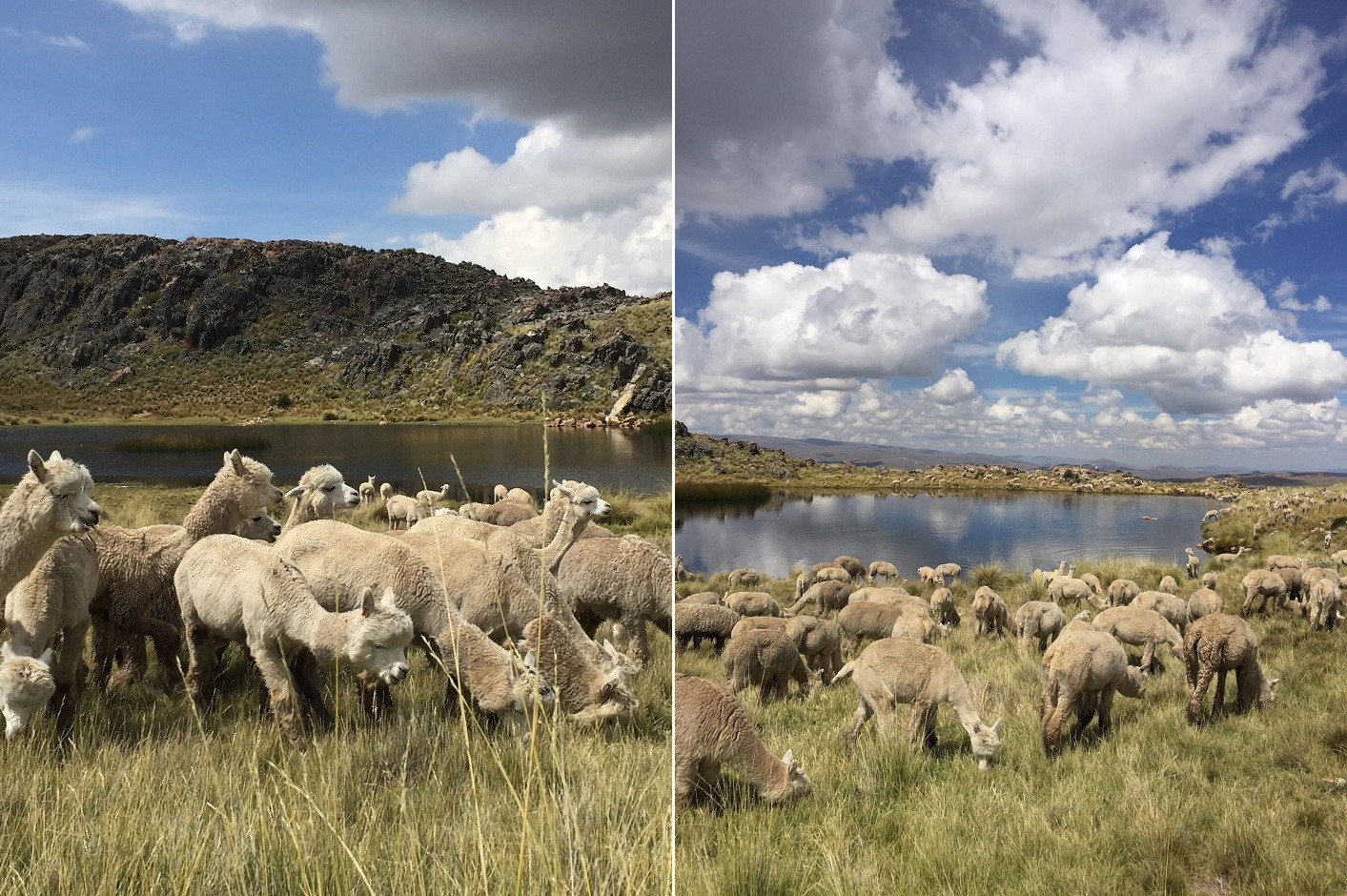
As one of the few fibres from around the world that we use to craft our timeless pieces, alpaca wool no doubt holds a special place in our hearts. Our love for the gentle, truly beautiful creatures that produce this equally stunning fibre however goes much deeper than that.
Alpacas are incredible animals that have been quietly roaming the Andes for generations. You’ll spot them some 4,000 metres above sea level, but there’s much more to the alpaca than meets the eye. Here we share just 10 alpaca facts to make you smile this January!
1. Domesticated alpacas are as historic as the Incas
In fact, it’s thought that the Incas were the first civilisation to domesticate and realise the true beauty of the alpaca. Tour in Peru explains more about the treasured relationship between alpacas and the Incas:
“The history of alpacas has not been a quiet one. They were treasured by the ancient Inca civilization. Their fine fleeces were reserved for Incan royalty. No other animal came close to their capacity for providing clothing, food, fuel, and companionship as domesticated animals. They were so important to Inca culture, that hunting them was outlawed.”
2. They’re great therapy animals
Whilst, here in the UK, it’s unlikely that you’ll see an alpaca roaming the corridors of your local community centre or care home, they’re gaining popularity as therapy animals around the world.
In the USA and Germany, alpacas are commonly invited to hospitals and retirement homes that host animal therapy groups, and patients and all the individuals who meet them are experiencing the benefits
3. There really is such a thing as an ‘llalpaca’
As the name suggests, an ‘llalpaca’ is an alpaca-llama hybrid. Known as a ‘huarizo’ in their native South America, the llalpaca is well regarded for its long coat and unique texture.
4. Alpacas are naturally house trained
Unlike many animal species, alpacas are very particular when it comes to their toilet habits. Both domesticated and wild alpacas relieve themselves in only a few designated places.
These alpaca toilets are positioned far away from where the herd grazes and usually consist of the most orderly mounds.
5. Female alpacas take their herd mentality very seriously
Whilst we’re on the subject of alpaca toilet habits. Like many groups of female humans, female alpacas often go to the toilet at the same time!
6. They’re not the spitting types
Alpacas are equally as polite with other habits too. Unlike their cousins, the llamas, alpacas don’t spit at humans as a defensive method. They instead use spitting to ward off advances from other alpacas.
7. Alpacas are missing a few teeth…
The layout of alpaca teeth is uniquely different to many other mammals. They don’t have any teeth in the top front section of their mouths.
8. …but are great eaters!
Alpacas use their incisors to grab grass before shutting their mouths and pressing their grub against specialised dental pads at the top of their jaws.
This unique way of eating makes them particularly efficient feeders and the same specialised methods can be seen in alpaca fossils dating back some 25 million years.
9. They’re excellent guard dogs
Alpacas have a skill that you may find surprising. Due to their extremely territorial natures, alpacas make excellent guard dogs.
Many turkey farms around the world actually recruit alpaca herds to do this very job and protect their livestock from fox attacks.
10. Alpaca fibres are the best around
Alpaca fibres are particularly highly prized, just like they were during the time of the Inca. Alpaca wool is hypoallergenic and naturally water repellent, which makes it the go-to fibre for the most sensitive individuals. It’s also much cosier and softer than sheep wool.
Discover the wonders of alpaca wool for yourself at So Cosy by shopping our 100% baby alpaca wool collection.
